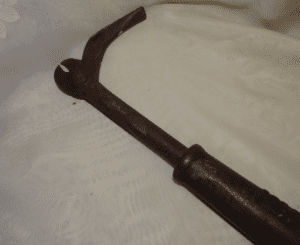Imagine looking up at your ceiling only to spot strange, scattered clumps or crawling insects. Is it just a harmless quirk of nature, or a sign of a bigger problem lurking above? For one homeowner, this scenario became all too real. They turned to an online homemaking group for advice on these unsettling ceiling visitors and received various theories—moths being the top suspect. If you’re experiencing a similar issue, read on for a step-by-step guide to identify and rid your home of these pesky invaders.

Understanding the Source of Ceiling Creepers
Strange sightings on your ceiling can be disconcerting, especially if it’s something you haven’t seen before. Moths, in particular, can be troublesome household pests. While some types of moths might seem harmless, others infiltrate homes, leaving behind larvae on ceilings, walls, and in pantries. They can enter homes through various means, often hitching a ride on food products, birdseed, or fabrics. Once they find a food source, they lay eggs, and soon their larvae begin wandering around, including on your ceiling.
Step 1: Identify the Pests on Your Ceiling
Before tackling any pest problem, the first step is identification. Ceiling creepers could be moth larvae, plaster bagworms, or even butterfly cocoons. Here’s a breakdown of each:
- Moth Larvae: Often found in pantries, these pests can end up on ceilings and walls if their population grows. They’re usually light in color and leave behind small webs or cocoons.
- Bagworms and Plaster Bagworms: These look like tiny, tubular cases stuck to walls and ceilings and are usually found in humid areas.
- Butterfly Cocoons: Rare, but possible, these cocoons can sometimes be mistaken for other pests, but they’re generally harmless.
Using a photo identification app or consulting with a pest expert can help you accurately identify the type of insect you’re dealing with. Knowing exactly what’s on your ceiling will allow you to choose the best eradication strategy.
Step 2: Inspect Your Pantry and Food Storage Areas
Once you’ve identified the culprit, it’s time to check your pantry. Moths are notorious for invading stored food items, especially grains, rice, and dried foods. Look for signs of small webs, larvae, or moths inside packaging. Unsealed containers are particularly vulnerable, as moths can easily lay eggs inside.
To prevent further contamination:
- Seal Food Items: Store all grains, cereals, and dried foods in airtight containers. Moths are persistent but find it difficult to access food in tightly sealed packaging.
- Clean the Pantry Regularly: Wipe down shelves and discard any infested food items. Vacuuming pantry corners and edges can help remove eggs and larvae that might not be visible.
Step 3: Begin the Eradication Process
If you find that moths have spread beyond your pantry, a more comprehensive approach is necessary. Here’s a detailed breakdown of how to tackle the infestation:
- Vacuuming: Begin by vacuuming any areas where you see moths or larvae, including ceilings, walls, and pantry shelves. This helps to remove eggs, larvae, and adult moths.
- Washing and Cleaning: Use warm, soapy water to clean all surfaces, especially corners, baseboards, and high-traffic moth areas. A vinegar solution can be an effective natural deterrent for moths.
- Dispose of Infested Items: If any food packages are infested, discard them immediately. Moth eggs are tiny and difficult to spot, so if you suspect any contamination, it’s best to play it safe.
Step 4: Take Preventative Measures to Avoid Future Infestations
Moth infestations can be frustrating, but there are preventative steps you can take to reduce the chances of their return. Here’s what you can do:
- Use Natural Moth Repellents: Herbs like bay leaves, lavender, and cloves can act as natural moth repellents. Place sachets of these herbs in pantries and storage areas.
- Maintain a Clean Home: Regularly vacuum and dust to remove food crumbs, organic material, or moisture that might attract moths.
- Inspect Groceries Carefully: Check dried goods for signs of moths before bringing them into your home, and consider freezing grains for a few days to kill any possible larvae.
Other Possible Ceiling Culprits to Watch For
While moth larvae are common ceiling invaders, other insects might be responsible for unusual markings or movement on ceilings. Here are some other possibilities:
- Termites: Known for infesting wood, termites may sometimes leave traces on ceilings if they’re nesting nearby. Look for small holes, frass (termite droppings), or damaged wood.
- Spiders and Spiderlings: In some cases, what looks like “ceiling creepers” could actually be spider hatchlings dispersing after hatching. While harmless, they may need removal.
- Cockroach Nymphs: Although not as common on ceilings, cockroach nymphs can sometimes make their way up high surfaces if they’re exploring for food or shelter.
If you’re unsure about the exact nature of the pests, consider consulting a pest control expert who can help identify and address the issue appropriately.

When to Seek Professional Help
In cases of a severe infestation, or if the problem persists after taking preventive steps, it may be best to seek professional pest control services. Pest experts have specialized equipment and treatments that can target infestations at the root. Here’s when to call for help:
- Recurring Infestations: If you’ve cleaned and treated your home, but moths keep returning, professional extermination may be needed to eradicate them fully.
- Health Concerns: If you or anyone in your household has allergies or respiratory issues that may be aggravated by pests, a professional solution is advisable.
- Extensive Property Damage: If you suspect that the pests are causing damage to walls, ceilings, or stored goods, it’s wise to consult an expert to prevent further property harm.
Conclusion: Restoring Peace of Mind by Tackling Unwanted Guests
Dealing with unwanted “ceiling creepers” can be unsettling, but with the right approach, you can identify and eliminate them effectively. By taking time to inspect, clean, and prevent future infestations, you can protect your home from these unwelcome guests. Whether it’s a pantry moth, a harmless bagworm, or another pest, addressing the problem early can make all the difference.
Remember, a clean and pest-free home doesn’t just happen by chance—it requires consistent care and vigilance. So, the next time you spot an unusual mark or critter on your ceiling, take a closer look and act quickly. With a little effort and attention, you can keep your home serene and free of intruding pests.


